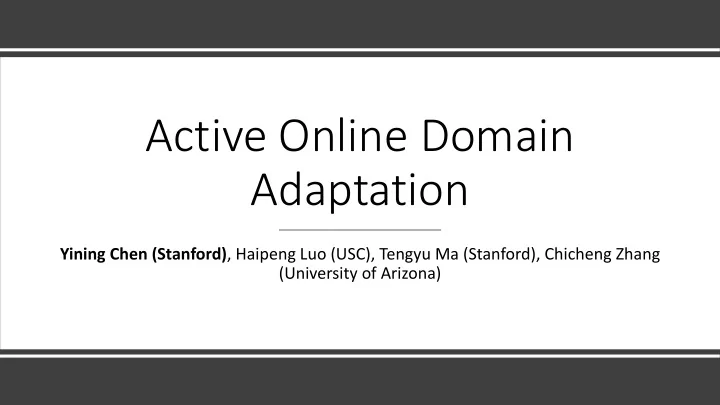

Active Online Domain Adaptation Yining Chen (Stanford) , Haipeng Luo (USC), Tengyu Ma (Stanford), Chicheng Zhang (University of Arizona)
Domain shift: challenge for ML system Time
Online learning: a classical framework for domain shift • At timestep t = 1, …, T: • Input is revealed. • Learner predicts , suffers some loss. • Label is revealed. Expensive! -> This work: active online learning Learner can decide whether to query the label.
Active online regression: Setup • Hypothesis class • Realizable setting: • At timestep t = 1, …, T: is revealed. • • Learner predicts , suffers loss . • Learner decides whether to query . • Metrics: (1) # queries (2) Regret • Goal: Minimize R subject to .
Linear regression • Hypothesis class: • Prediction strategy: • Follow the regularized leader on all queried examples till t-1: • What’s the query strategy? • Uniformly random queries are optimal without domain structure.
Can we do better if the data is structured? • Domain structure: D 1 D 2 D 1 D 2 D 3 domains • • Domain : support dimension , duration
Main contribution: optimal tradeoff with unk unkno nown wn domain structure • QuFUR (Query in the Face of Uncertainty for Regression): • Query uncertain examples • Linear Regression: For any domain partition, with high probability: • Matching lower bound. • Generalize to general hypothesis classes w/ bounded Eluder Dimension.
Recommend
More recommend